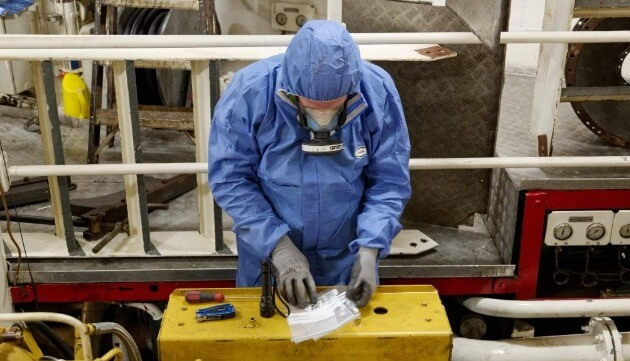International Maritime Organization’s Hong Kong Convention to Enhance Safety and Sustainability in Ship Recycling
On June 26, 2025, the Hong Kong International Convention for the Safe and Environmentally Sound Recycling of Ships (Hong Kong Convention) will come into effect. This important agreement aims to ensure that the ship recycling industry operates safely and sustainably, protecting both workers and the environment from hazardous materials found on ships.
Improper management of hazardous materials can lead to serious health issues and environmental pollution, including oil spills and contamination of soil and water, which can harm marine life and local ecosystems.

Source: SGS
Each year, around 500 commercial vessels reach the end of their service life and undergo shipbreaking, the process of dismantling ships for recycling. Under the Hong Kong Convention, vessels over 500 gross tonnage (GT) must maintain an Inventory of Hazardous Materials (IHM), which lists all hazardous substances on board, such as asbestos and heavy metals. This inventory is essential for safe handling and disposal during dismantling.
Once the convention is in force, all ships over 500 GT must have an approved IHM by the implementation date. This requirement applies to vessels flagged by countries that are parties to the convention, and flag Administrators are expected to enforce compliance. The convention specifies hazardous materials that must be inventoried, including asbestos, heavy metals, chromium-6, and polychlorinated biphenyls (PCBs). Proper management of these substances will reduce risks during recycling.
The history of ship recycling has seen many accidents, underscoring the need for strict safety measures and adherence to the convention’s regulations. The IHM is vital for mitigating risks associated with hazardous materials and establishes best practices in the shipping and recycling industries.
IHM inventories should be conducted at different stages of a ship’s life:
- Approval and Certification (PART I): Initial inventory creation.
- Maintenance and Renewal: Regular updates every five years.
- Dismantling and Recycling (PART II and III): Final inventory management during recycling.
Certified inspectors conduct these assessments and can assist shipowners with compliance. If hazardous materials are found, remediation can be performed under expert supervision, including removal and replacement with safer alternatives.
As the enforcement date of the Hong Kong Convention approaches, it signifies a significant advancement in enhancing the safety of ship recycling processes and protecting workers and the marine environment. By ensuring that all vessels have a comprehensive IHM, the maritime industry can adopt a safer and more responsible approach to ship disposal, benefiting society as a whole.
Monitoring hazardous materials throughout a ship’s lifecycle is crucial for minimizing health risks and complying with environmental regulations. The convention, along with the implementation of IHM, highlights the shipping industry’s commitment to sustainable practices and the well-being of communities worldwide.

